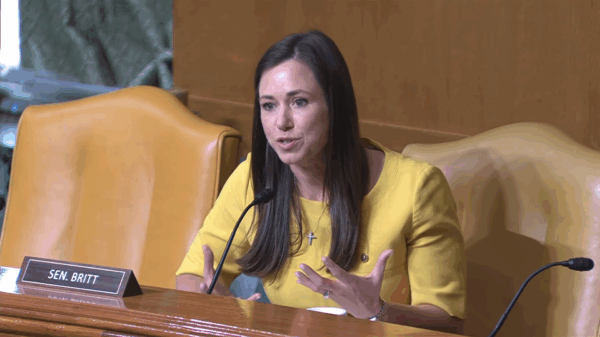The new federal infrastructure act provides much-needed stability for Alabama’s road and bridge network over the next five-plus years.
How Will Federal Funding Be Used?
The Infrastructure Investment and Jobs Act will help sustain the final 20 months of the current Statewide Transportation Improvement Program, the four-year plan for road and bridge projects across the Alabama. Once the new funding becomes available, it will also allow projects for late 2022 and 2023 to be accelerated – possibly pulling in more projects that are currently outside the existing Statewide Transportation Improvement Program. And, it will also provide federal funding stability for the Statewide Transportation Improvement Program for 2024 through 2027. The public input period for the next four-year plan will begin in January 2023, giving residents and local officials the opportunity to advocate for the most pressing unmet local needs.
“The infrastructure act will enable the Alabama Department of Transportation to push forward with projects across the state aimed at safety, better bridges, resurfacing roadways and reducing congestion in big cities and small towns,” said ALDOT spokesman Tony Harris. “The new federal funding dovetails nicely into our State Transportation Improvement Program which allows communities to identify priorities, and it ensures that funding is spread evenly and fairly across Alabama.”
Fortunately, there are hundreds of projects in the current State Transportation Improvement Program and a long list of evolving needs for the next four-year plan that will put hundreds of new projects in the pipeline across Alabama in both urban and rural areas, Harris said.
How Much Federal Funding is Alabama Receiving? What are the Restrictions?
The infrastructure act, signed November 15 by President Biden, budgets approximately $5.5 billion to Alabama over the next five years. Transportation funding acts typically budget federal funds for the states in five-year increments.
Across the road/bridge categories available to ALDOT, the new act represents a modest increase of approximately $170 million in federal funding per year, about 17 percent higher than the previous five-year period. The new funding is spread across 12 funding categories as opposed to only seven categories under the previous act – some of which are not under ALDOT control (such as Metropolitan Planning Organization pass-through funding) or federal funding reserved for transit.
All federal money is restricted to one of 12 funding categories, such as the National Highway System (interstate and U.S. highways), Surface Transportation (bridge replacement, state highway resurfacing, new lanes) and highway safety. About one-third of new federal money is restricted to one of five new categories, three of which are not directly related to road and bridge improvements.
“It will be a tremendous benefit to use the increased funding to advance projects during the next few years that might otherwise languish somewhere outside a five- to 10-year window,” Harris said. “The average Alabamian will see local projects move forward. It’s not a magic bullet, and there’s not enough new money to tackle the largest of needs, but the progress with road and bridge improvements will be noticeable in all 67 counties across Alabama.”
Harris said there’s more public misunderstanding about this funding act compared to others during his nearly 20 years with ALDOT: “The biggest misunderstanding is that this is NOT new federal money… this is baseline funding plus a small increase over previous levels. And, it’s important to realize the federal money is spread across five years and across a dozen categories, with each category having defined uses. With restrictions and limitations across so many categories, it makes it essential to focus on the preservation needs of our existing transportation network rather than the mega-projects that need more funding than the infrastructure act provides. There’s simply not enough flexibility to allow using the funds on mega-projects.”
What’s New Under the Infrastructure Act?
One of the most anticipated categories is a new program for Bridge Replacement, Preservation and Construction. This category provides $45 million in new annual funding as part of a formula-based distribution determined by the number of bridges classified in poor or fair condition under the National Bridge Inspection Program. With only 67 bridges in poor condition on the state, U.S. and interstate highway system, Alabama is one of 20 states to receive the minimum amount under the federal distribution formula. This minimum funding level is a reflection that Alabama’s overall bridge conditions are better than the average bridge inventory in more than half the states. Official federal guidelines have not been issued, so planning for this category of funding isn’t likely to begin until later this year.
The act contains several competitive grant programs that might provide options for additional funding for major road/bridge projects. Alabama has successfully competed for several such grants in the past. No major projects in Alabama received up-front earmarks under the infrastructure act.
The act includes a separate appropriation for Appalachian Development Highways, which in Alabama, means the Birmingham Northern Beltline. ALDOT is still awaiting details from the U.S. Department of Transportation on the state’s exact share of funding and the appropriations schedule, but it’s likely to be enough over the next five years to keep making progress.
Additional Context
Through at least February 2022, ALDOT is operating off the previous federal funding act. While the new infrastructure act budgets an overall funding amount through the end of fiscal year 2026, ALDOT will continue at previous funding levels until Congress passes the corresponding authorization and appropriation legislation (likely to happen sometime before Spring). In the meantime, ALDOT is making preparations to complete preliminary engineering on projects in the current Statewide Transportation Improvement Program to take advantage of increased funding levels.
What is the Statewide Transportation Improvement Program (STIP)?
The Statewide Transportation Improvement Program (STIP) is a federally mandated 4-year funding and scheduling document for surface transportation projects in Alabama (roads, bridges, pedestrian/bicycle trails, etc.). The STIP is important because federal and state money cannot be spent on projects unless they are listed in the STIP. The STIP must be financially constrained to the estimated federal apportionments. Only projects which construction and operating funds can reasonably be expected to be available are included in the STIP. ALDOT develops the STIP in accordance with current federal funding acts. Projects are developed in coordination with the state’s metropolitan planning and rural planning organizations. Projects are listed in the STIP by county. The STIP verifies that transportation revenues are available and sufficient to finance the improvements. To view detailed information, visit the ALDOT web page at:https://cpmsapps.dot.state.al.us/OfficeEngineer/Plan/Statewide
When Is the STIP Prepared?
The STIP is completely updated every four years. The process is very involved and must be coordinated with various stakeholders, partners and local leaders from communities across Alabama. The update process can take up to 9-months. If needed, amendments are performed every three months.
Outreach and Public Involvement
Two-way information sharing and stakeholder involvement is critical to ALDOT in the development of a STIP that best meets the ongoing transportation needs of the state. Public involvement provides Alabama a road map for assuring everyone’s voice is heard.























































